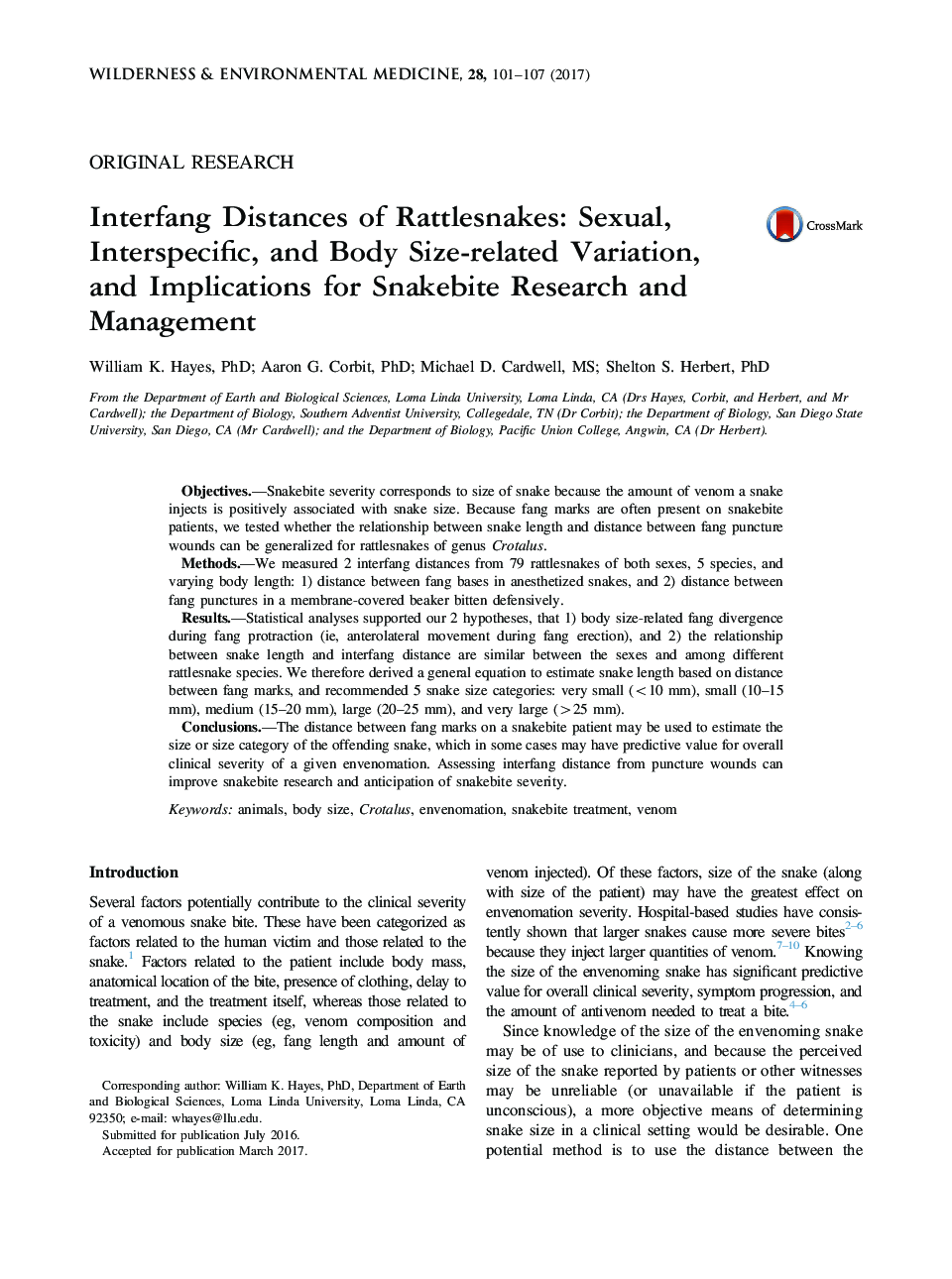| Article ID | Journal | Published Year | Pages | File Type |
|---|---|---|---|---|
| 5563640 | Wilderness & Environmental Medicine | 2017 | 7 Pages |
ObjectivesSnakebite severity corresponds to size of snake because the amount of venom a snake injects is positively associated with snake size. Because fang marks are often present on snakebite patients, we tested whether the relationship between snake length and distance between fang puncture wounds can be generalized for rattlesnakes of genus Crotalus.MethodsWe measured 2 interfang distances from 79 rattlesnakes of both sexes, 5 species, and varying body length: 1) distance between fang bases in anesthetized snakes, and 2) distance between fang punctures in a membrane-covered beaker bitten defensively.ResultsStatistical analyses supported our 2 hypotheses, that 1) body size-related fang divergence during fang protraction (ie, anterolateral movement during fang erection), and 2) the relationship between snake length and interfang distance are similar between the sexes and among different rattlesnake species. We therefore derived a general equation to estimate snake length based on distance between fang marks, and recommended 5 snake size categories: very small (<10 mm), small (10-15 mm), medium (15-20 mm), large (20-25 mm), and very large (>25 mm).ConclusionsThe distance between fang marks on a snakebite patient may be used to estimate the size or size category of the offending snake, which in some cases may have predictive value for overall clinical severity of a given envenomation. Assessing interfang distance from puncture wounds can improve snakebite research and anticipation of snakebite severity.
